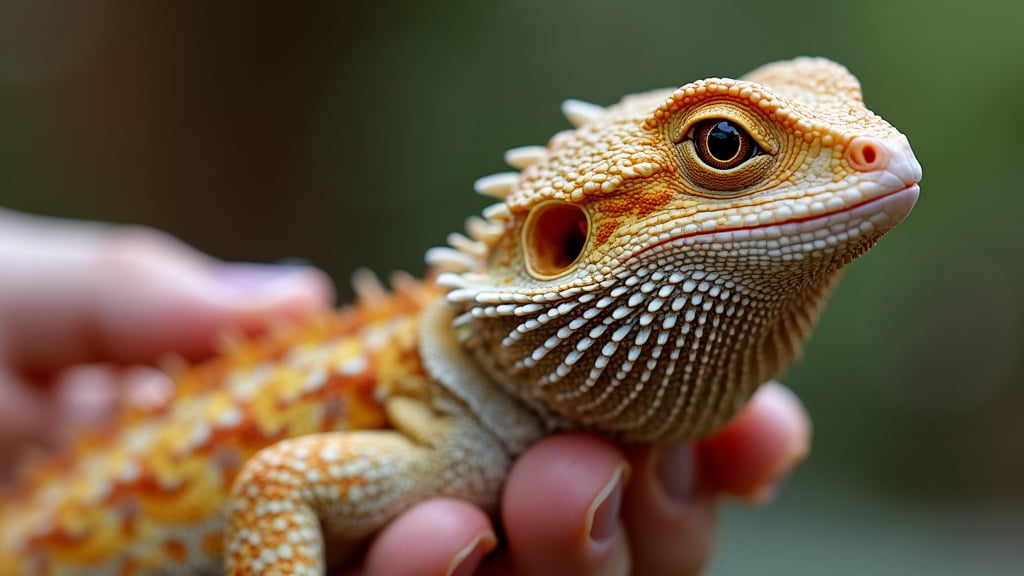Caring for Different Bearded Dragon Morphs
When it comes to keeping exotic pets, bearded dragons, or ‘beardies’ as they’re affectionately known, are a top favourite. These reptiles are not only relatively easy to care for, but they also come in an astounding variety of morphs. The term ‘morph’ refers to the genetic variation that results in different colours, patterns, and sizes among bearded dragons. Each morph can have specific care requirements and considerations. In this guide, we’ll explore how to care for different bearded dragon morphs, ensuring they thrive in your home.
Introduction to Bearded Dragon Morphs
You might be fascinated by the sheer diversity of bearded dragon morphs if you’re a reptile enthusiast like me. Whether it’s the vibrant colours or unique patterns, each morph offers something distinct. But how do you properly care for these diverse types? From experience, I can tell you it’s not just about adoring their appearance; understanding their specific needs is crucial.
Understanding the Basics of Bearded Dragon Care
Before diving into the specifics of different morphs, it’s essential to grasp the general care requirements of bearded dragons. The fundamentals include:
1. Environment
- A terrarium with the right temperature gradient, ample space, and safe substrate.
2. Diet
- A balanced diet of insects and vegetables.
3. Lighting
- UVB lighting to help with calcium absorption.
4. Handling
- Proper handling to ensure they are comfortable and stress-free.
Essentials for All Bearded Dragon Morphs
Regardless of the morph, all bearded dragons need:
- A large enough enclosure: At least 40 gallons, with a secure screen lid.
- Proper lighting: UVB bulbs should be replaced every six months.
- Dietary supplementation: Calcium and vitamin D3 supplements are a must.
- Regular veterinary check-ups: To keep an eye on their overall health.
The Most Popular Bearded Dragon Morphs
Now, let’s delve into the care specifics for some of the most popular bearded dragon morphs.
Normal/Standard Morphs
These are the classic bearded dragons and are typically brown or tan.
Care Tips:
- Temperature Regulation: Keep the basking spot at around 40°C and the cool side at 22-26°C.
- Humidity: Maintain it between 30-40%.
- Diet: Offer a mix of live insects (like crickets) and fresh vegetables.
Hypo Morphs
Hypo morphs have reduced melanin, leading to lighter colours.
Care Tips:
- Skin Sensitivity: Because of their lighter skin, they can be more sensitive to bright lights. Ensure their basking spot isn’t overly intense.
- Ambient Temperature: Keep their enclosure slightly cooler than that of the normal morph.
Sub-Section: Hypo Leatherbacks
Leatherbacks have smoother skin which requires special care.
Moisturising: Their skin can dry out more quickly, so regular misting is beneficial.
Translucent Morphs
These dragons often have slightly see-through skin and black eyes.
Care Tips:
- Hydration: They tend to be more prone to dehydration. Regular misting and ensuring access to fresh water is vital.
- UVB Lighting: Pay careful attention to this as they are more susceptible to UVB deficiencies.
Silkback Morphs
A truly unique morph, silkbacks lack scales entirely.
Care Tips:
- Skin Care: They require higher humidity and frequent misting to prevent skin issues.
- Shelter: Ensure they have plenty of shaded areas to avoid overexposure to UVB light and heat.
Specific Challenges and How to Overcome Them
Dietary Adjustments
Different morphs can have varying metabolisms and dietary needs.
- Monitor Weight: Regularly monitor your dragon’s weight and adjust food quantities accordingly.
- Balanced Diet: Ensure a varied diet to avoid nutritional deficiencies.
Enclosure Setup
For some morphs, traditional substrate can cause issues.
- Silkbacks: Use non-abrasive substrates like paper towels or reptile carpet.
- Leatherbacks and Translucent Morphs: Avoid loose substrates like sand to prevent impaction.
Conclusion
Caring for different bearded dragon morphs can be incredibly rewarding, yet it requires an understanding of their unique needs. From normal morphs to the exotic silkbacks, each type has its own care specifics. By ensuring proper lighting, diet, and habitat conditions, you can keep your beardie healthy and happy. Always remember, any signs of illness or distress should be addressed by a vet immediately.
Internal Links
External Links
Meta Description
Explore the care specifics for different bearded dragon morphs to keep your exotic pet healthy and thriving. Find tips on diet, environment, and health from an expert.
Remember, whilst this guide offers a solid foundation, each bearded dragon is unique. Always stay observant and adjust care routines according to your pet’s individual needs. Happy reptile-keeping!

